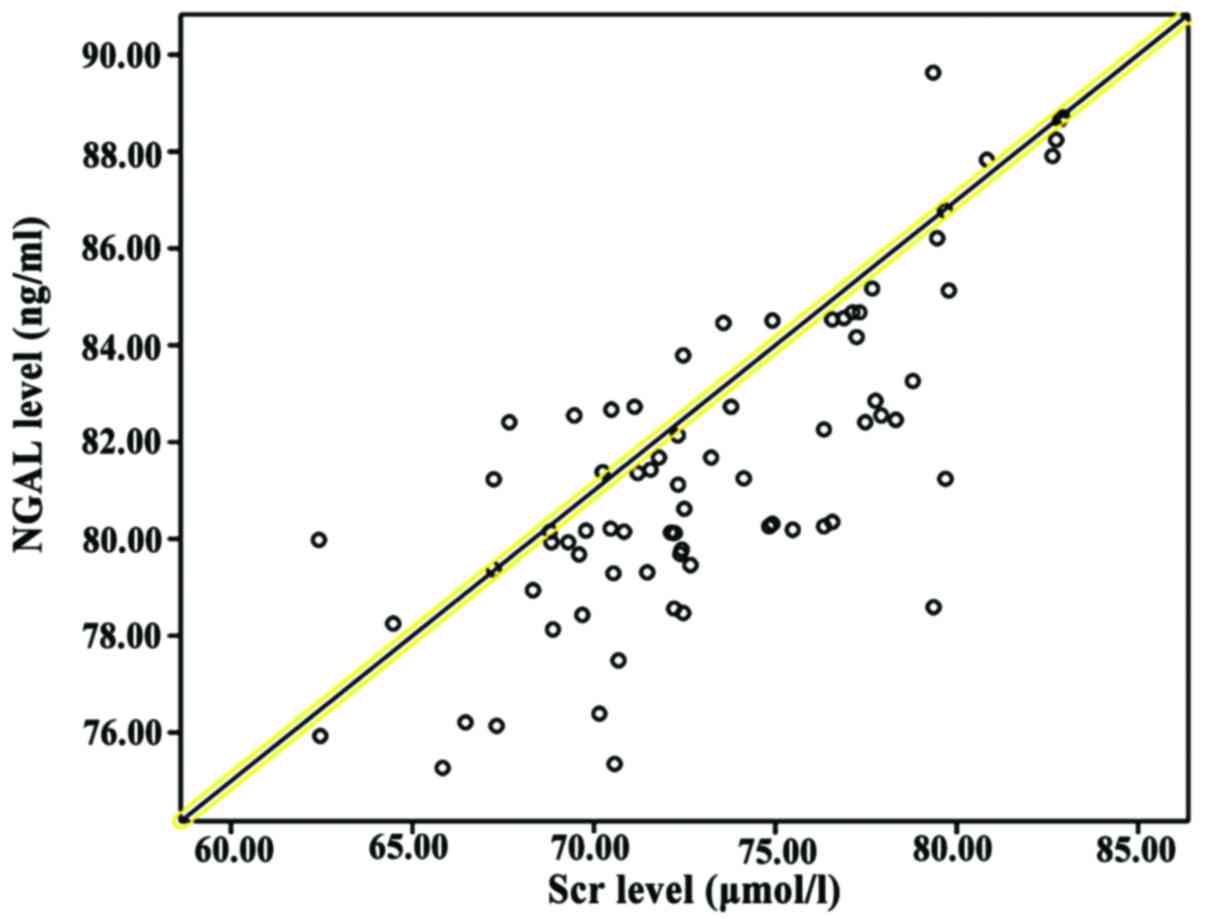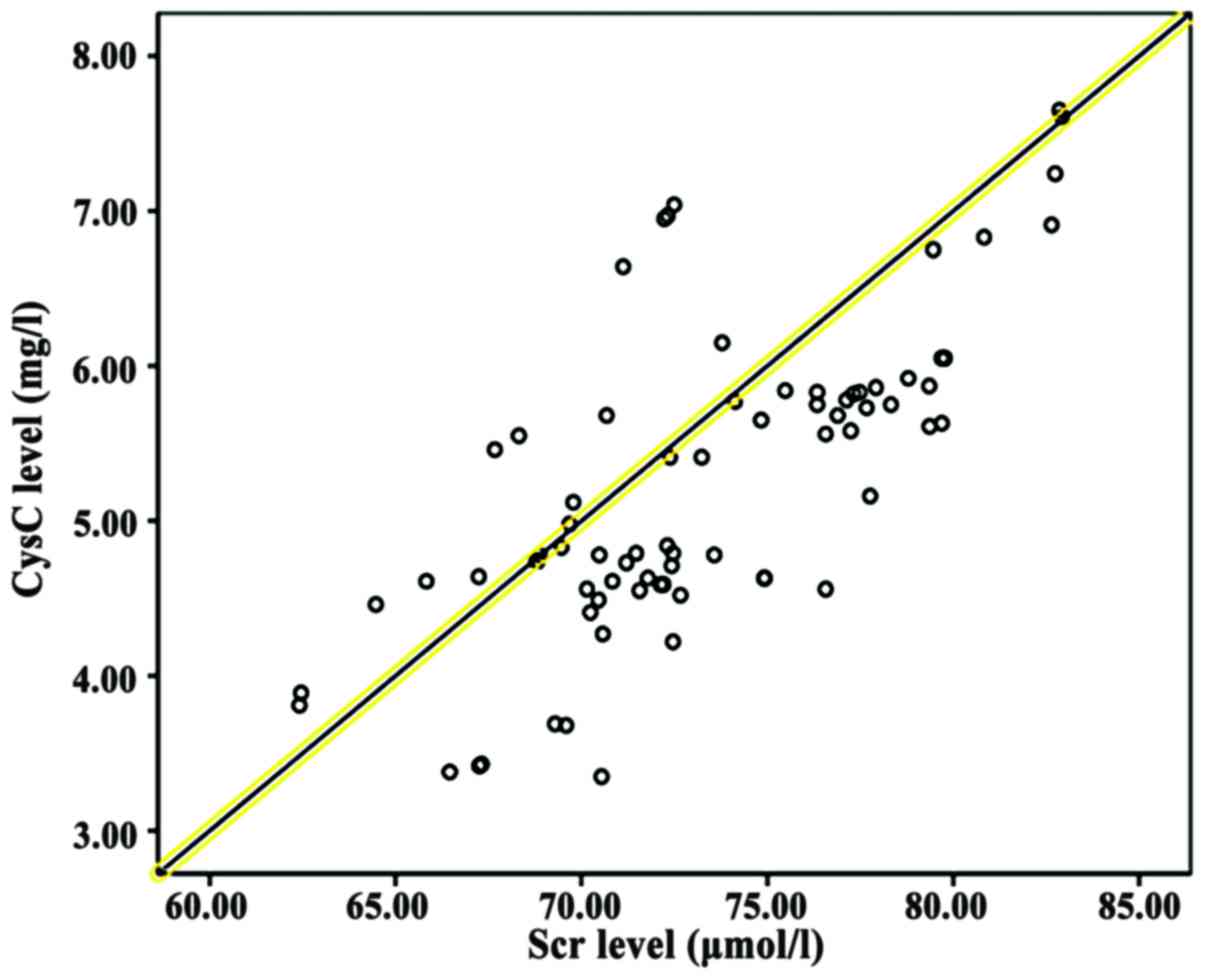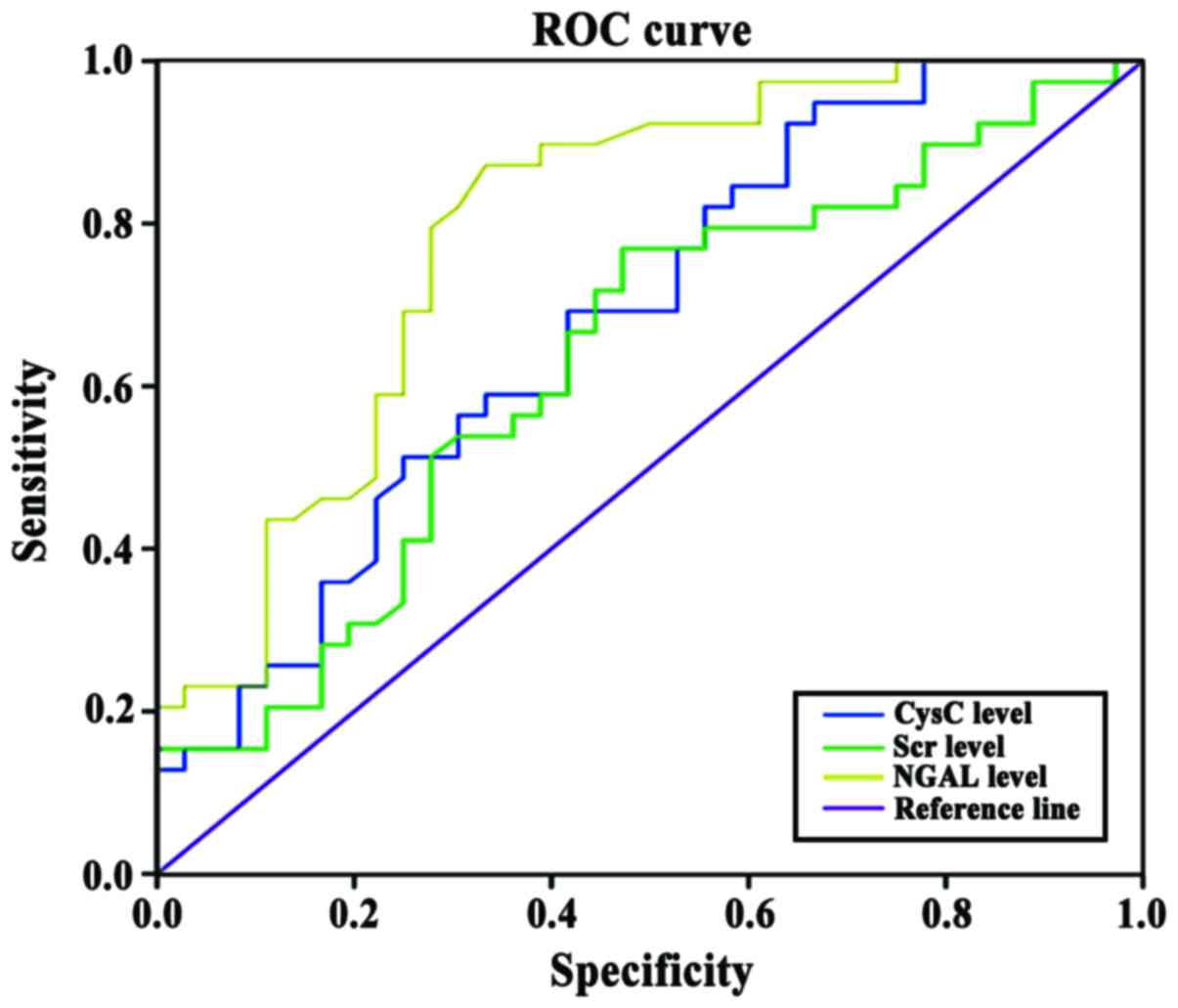|
1
|
Teles F, de Mendonça Uchôa JV, Mendonça
Mirelli Barreto D and Costa Falcão Pedrosa A: Acute kidney injury
in leptospirosis: The Kidney Disease Improving Global Outcomes
(KDIGO) criteria and mortality. Clin Nephrol. 86:303–309. 2016.
View Article : Google Scholar : PubMed/NCBI
|
|
2
|
Brown JR, Robb JF and Malenka DJ: Abstract
1056: Does ‘safe’ dosing of iodinated contrast prevent
contrast-induced acute kidney injury. Cardiology. 131:2492015.
|
|
3
|
Hoste EA, Bagshaw SM, Bellomo R, Cely CM,
Colman R, Cruz DN, Edipidis K, Forni LG, Gomersall CD, Govil D, et
al: Epidemiology of acute kidney injury in critically ill patients:
The multinational AKI-EPI study. Intensive Care Med. 41:1411–1423.
2015. View Article : Google Scholar : PubMed/NCBI
|
|
4
|
Wang N, Jiang L, Zhu B, Wen Y and Xi XM:
Beijing Acute Kidney Injury Trial (BAKIT) Workgroup: Fluid balance
and mortality in critically ill patients with acute kidney injury:
A multicenter prospective epidemiological study. Crit Care.
19:3712015. View Article : Google Scholar : PubMed/NCBI
|
|
5
|
Cuartero M, Betbesé A, Sabater J, Ballús J
and Ordóñez J: Urinary TIMP2 and IGFBP7 as early biomarkers of
acute kidney injury in septic and nonseptic critically ill
patients. Crit Care. 19 Suppl 1:191–201. 2015. View Article : Google Scholar : PubMed/NCBI
|
|
6
|
Lagos-Arevalo P, Palijan A, Vertullo L,
Devarajan P, Bennett MR, Sabbisetti V, Bonventre JV, Ma Q,
Gottesman RD and Zappitelli M: Cystatin C in acute kidney injury
diagnosis: Early biomarker or alternative to serum creatinine?
Pediatr Nephrol. 30:665–676. 2015. View Article : Google Scholar : PubMed/NCBI
|
|
7
|
Veighey K and MacAllister R: Clinical
applications of remote ischaemic preconditioning in native and
transplant acute kidney injury. Pediatr Nephrol. 30:1749–1759.
2015. View Article : Google Scholar : PubMed/NCBI
|
|
8
|
Ostermann M, Dickie H and Barrett NA:
Renal replacement therapy in critically ill patients with acute
kidney injury - when to start. Nephrol Dial Transplant.
27:2242–2248. 2012. View Article : Google Scholar : PubMed/NCBI
|
|
9
|
Bagshaw SM, Zappitelli M and Chawla LS:
Novel biomarkers of AKI: The challenges of progress ‘Amid the noise
and the haste’. Nephrol Dial Transplant. 28:235–238. 2013.
View Article : Google Scholar : PubMed/NCBI
|
|
10
|
Young P, Bailey M, Beasley R, Henderson S,
Mackle D, McArthur C, McGuinness S, Mehrtens J, Myburgh J, Psirides
A, et al: SPLIT Investigators; ANZICS CTG: Effect of a buffered
crystalloid solution vs saline on acute kidney injury among
patients in the intensive care unit: The SPLIT Randomized Clinical
Trial. JAMA. 314:1701–1710. 2015. View Article : Google Scholar : PubMed/NCBI
|
|
11
|
Siew ED and Davenport A: The growth of
acute kidney injury: A rising tide or just closer attention to
detail? Kidney Int. 87:46–61. 2015. View Article : Google Scholar : PubMed/NCBI
|
|
12
|
Karvellas CJ, Durand F and Nadim MK: Acute
kidney injury in Cirrhosis. Crit Care Clin. 31:737–750. 2015.
View Article : Google Scholar : PubMed/NCBI
|
|
13
|
Siew ED and Matheny ME: Choice of
reference Serum creatinine in defining acute kidney injury.
Nephron. 131:107–112. 2015. View Article : Google Scholar : PubMed/NCBI
|
|
14
|
Grynberg K, Polkinghorne KR, Ford S,
Stenning F, Lew TE, Barrett JA and Summers SA: Early serum
creatinine accurately predicts acute kidney injury post cardiac
surgery. BMC Nephrol. 18:932017. View Article : Google Scholar : PubMed/NCBI
|
|
15
|
de Geus HR, Betjes MG, Schaick R and
Groeneveld JA: Plasma NGAL similarly predicts acute kidney injury
in sepsis and nonsepsis. Biomarkers Med. 7:415–421. 2013.
View Article : Google Scholar
|
|
16
|
Devarajan P: NGAL for the detection of
acute kidney injury in the emergency room. Biomarkers Med.
8:217–219. 2014. View Article : Google Scholar
|
|
17
|
Yim H, Kym D, Seo DK, Yoon J, Yang HT, Lee
J, Cho YS, Hur J, Chun W and Han SW: Serum cystatin C and
microalbuminuria in burn patients with acute kidney injury. Eur J
Clin Invest. 45:594–600. 2015. View Article : Google Scholar : PubMed/NCBI
|
|
18
|
Bongiovanni C, Magrini L, Salerno G, Gori
CS, Cardelli P, Hur M, Buggi M and Di Somma S: Serum cystatin C for
the diagnosis of acute kidney injury in patients admitted in the
emergency department. Dis Markers. 2015:4160592015. View Article : Google Scholar : PubMed/NCBI
|
|
19
|
Volpon LC, Sugo EK and Carlotti AP:
Diagnostic and prognostic value of serum cystatin C in critically
ill children with acute kidney injury. Pediatr Crit Care Med.
16:e125–e131. 2015. View Article : Google Scholar : PubMed/NCBI
|
|
20
|
Gaygısız Ü, Aydoğdu M, Badoğlu M, Boyacı
N, Güllü Z and Gürsel G: Can admission serum cystatin C level be an
early marker subclinical acute kidney injury in critical care
patients? Scand J Clin Lab Invest. 76:143–150. 2016. View Article : Google Scholar : PubMed/NCBI
|
|
21
|
Ghonemy TA and Amro GM: Plasma neutrophil
gelatinase-associated lipocalin (NGAL) and plasma cystatin C (CysC)
as biomarker of acute kidney injury after cardiac surgery. Saudi J
Kidney Dis Transpl. 25:582–588. 2014. View Article : Google Scholar : PubMed/NCBI
|

















